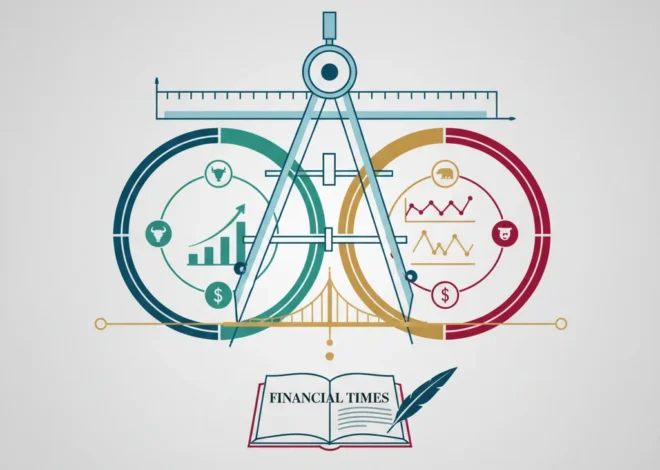
Goldman Sachs’ Blockbuster Quarter: Decoding the Roar of Investment Banking and What It Signals for the Global Economy
In the intricate dance of the global economy, the quarterly earnings of Wall Street titans serve as a crucial barometer. When a giant like Goldman Sachs reports its figures, investors, executives, and policymakers lean in, listening for clues about the health of capital markets and the direction of corporate confidence. The latest report was not just a whisper but a roar, signaling a powerful resurgence in a division that has been dormant for nearly two years: investment banking.
Goldman Sachs shattered analyst expectations, delivering a performance propelled by a dramatic rebound in its advisory and underwriting businesses. This isn’t just a story about a single bank’s successful quarter; it’s a potential bellwether for a broader economic shift, suggesting that the gears of corporate deal-making, public offerings, and large-scale financing are beginning to turn with renewed vigor. Let’s dive deep into the numbers, analyze the driving forces behind this comeback, and explore what it means for the stock market, the banking sector, and your own investment strategy.
The Anatomy of a Blowout Quarter
At first glance, the numbers are impressive. The firm reported a net income of $4.13 billion, or $11.58 per share, for the first quarter. This figure comfortably surpassed the consensus analyst estimates, marking a 28 per cent increase in net profits compared to the same period last year. Total revenue also climbed by 16 per cent to $14.21 billion, beating forecasts by a significant margin. But to truly understand the story, we must look beyond the headlines and dissect the performance of each core division.
The table below provides a simplified breakdown of Goldman Sachs’ revenue sources for the quarter, highlighting the standout performance of its investment banking arm.
| Division | Q1 2024 Revenue | Year-over-Year Change | Key Drivers |
|---|---|---|---|
| Global Banking & Markets | $9.73 billion | +15% | Strong performance in Investment Banking fees and Trading (FICC & Equities). |
| – Investment Banking Fees | $2.08 billion | +32% | Surge in debt underwriting, equity underwriting, and M&A advisory. |
| Asset & Wealth Management | $3.79 billion | +18% | Higher fees from increased assets under supervision and gains on equity investments. |
| Platform Solutions | $698 million | +24% | Increased revenue from credit card balances and installment loans. |
As the data clearly shows, the 32% year-over-year surge in Investment Banking fees was the primary catalyst for the quarter’s success. This revival marks a decisive end to the M&A and IPO drought that has plagued Wall Street since the Federal Reserve began its aggressive interest rate hiking cycle in 2022.
The Engine Room: Why Investment Banking Is Back
For nearly two years, the world of high-stakes corporate finance was in a deep freeze. Economic uncertainty, soaring borrowing costs, and volatile markets made CEOs hesitant to pull the trigger on major acquisitions or take their companies public. That chill is finally beginning to thaw, and Goldman Sachs is reaping the early rewards.
Three Pillars of the Rebound:
- Debt Underwriting (DCM): The most significant contributor was debt capital markets. Companies that had delayed refinancing or raising new capital are now rushing to lock in current interest rates before any potential shifts. Goldman’s revenue from this segment soared, demonstrating a renewed corporate appetite for borrowing to fund operations, expansion, and acquisitions.
- Equity Underwriting (ECM): The market for Initial Public Offerings (IPOs) is showing green shoots. High-profile listings like Reddit and Astera Labs have tested the waters with success, encouraging other private companies to consider going public. This renewed activity in the IPO market is a critical source of fees for investment banks and a strong indicator of investor risk appetite. According to the Financial Times, Goldman’s equity underwriting revenues jumped significantly, reflecting this trend.
- Mergers & Acquisitions (M&A) Advisory: While still lagging the boom of 2021, M&A activity is picking up. Stabilizing valuations and pent-up demand are driving a new wave of strategic deals. As a perennial leader in M&A advisory, Goldman is perfectly positioned to capitalize on this recovery. The conversations in boardrooms are shifting from “wait and see” to “how do we grow?”
Beyond Investment Banking: A Diversified Powerhouse
While investment banking stole the spotlight, the health of Goldman’s other divisions provides a more complete picture of its strength. The Global Markets division, which includes its massive trading operations, also posted strong results. Fixed Income, Currencies, and Commodities (FICC) trading revenue rose 10%, a sign that the bank successfully navigated market volatility. This robust trading performance provides a stable foundation, smoothing out the cyclicality of the investment banking business.
Simultaneously, the firm continues its strategic pivot towards the more stable, fee-based revenues of Asset & Wealth Management. This division also saw an 18% revenue increase, driven by higher assets under supervision and successful private equity investments. This long-term shift aims to make Goldman’s earnings less dependent on the boom-and-bust cycles of trading and deal-making, a strategy applauded by many long-term investors.
The Ripple Effect: What This Means for the Broader Market
Goldman Sachs’ results are more than just a corporate report card; they are a macroeconomic signal with wide-ranging implications.
For the Economy and the Stock Market:
A thriving investment banking sector is often a leading indicator of economic health. Increased M&A and IPO activity suggests that corporate leaders are confident about the future and are willing to deploy capital for growth. This can create a virtuous cycle: successful IPOs inject new life into the stock market, while strategic M&A can lead to more efficient, competitive companies. For the broader economy, this translates into capital investment, job creation, and innovation. The strong performance could signal that the much-feared recession is firmly in the rearview mirror, providing a tailwind for equities.
For Investors:
For those investing in the financial sector, this report offers a compelling data point. It suggests that bank valuations, which have been depressed due to concerns over interest rates and credit quality, may be due for a re-rating. If this rebound in capital markets activity is sustainable, the entire banking sector stands to benefit. However, investors should also consider the evolving role of financial technology (fintech), which continues to disrupt traditional banking models. The banks that will succeed are those, like Goldman, that effectively integrate technology to improve efficiency and client services.
The Road Ahead: Navigating Future Challenges and Opportunities
Despite the stellar quarter, the path forward is not without obstacles. Geopolitical instability, persistent inflation, and uncertainty around the Federal Reserve’s next move remain significant headwinds. A sudden economic downturn could quickly shutter the re-opened IPO window and put M&A deals back on ice.
However, the opportunities are equally compelling. The digital transformation of finance continues unabated. The integration of artificial intelligence in trading algorithms and client advisory is in its early stages. Furthermore, the long-term potential of technologies like blockchain to revolutionize clearing, settlement, and the very nature of financial assets represents a massive, albeit distant, opportunity. Banks that invest in and adapt to these technological shifts will define the future of the industry. Goldman’s continued investment in these areas, including its Platform Solutions division, indicates it is looking far beyond the next quarter’s results. As stated in their official earnings release, the firm is focused on executing its long-term strategy across all its core businesses.
In conclusion, Goldman Sachs’ first-quarter earnings report is a multifaceted story of revival, strategy, and economic signaling. The powerful resurgence of its investment banking division is a clear sign that the gears of global finance are grinding back into motion. While challenges remain, the report paints a picture of a confident, adaptable institution capitalizing on a changing market. For anyone interested in economics, investing, or the future of finance, the message is clear: Wall Street is back in business, and its renewed energy is likely to ripple across the entire global economy.


